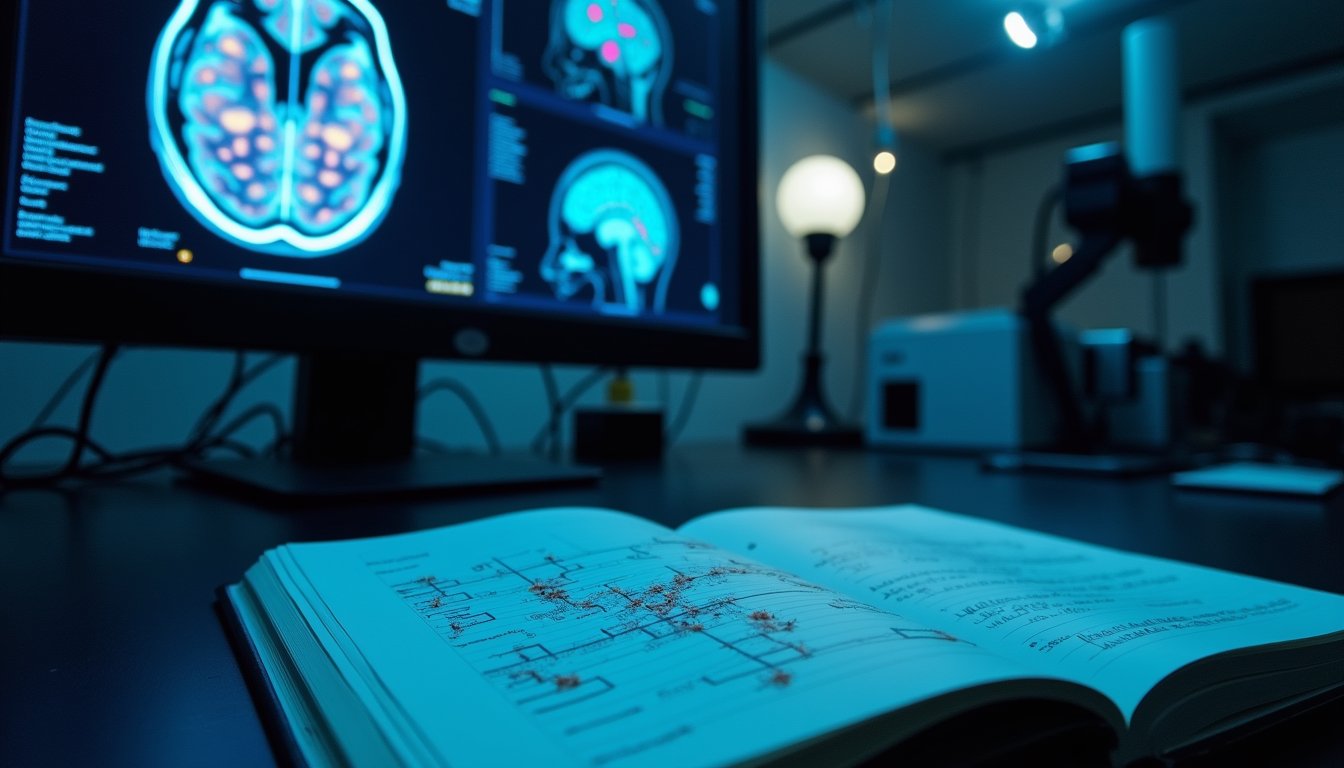You can achieve emotional balance through proven scientific approaches that integrate mindfulness and self-awareness practices. Start by understanding how your prefrontal cortex and amygdala work together in emotional processing, then implement daily mindful breathing exercises to activate your parasympathetic nervous system. Combine this with active emotional regulation techniques, boundary setting, and relationship strengthening strategies. These evidence-based methods form a thorough framework for lasting emotional stability and professional success.
Understanding the Core Elements of Emotional Balance

While emotional balance may seem like an abstract concept, it fundamentally represents your ability to manage emotions effectively without self-judgment. When you develop emotional balance benefits, you’ll experience improved decision-making capabilities and stronger relationships across all aspects of your life.
The foundation of emotional resilience practices begins with self-awareness, which enables you to recognize and understand your emotional patterns. Through regular emotional check-ins, you can maintain a clearer understanding of your emotional state and respond appropriately. Developing strong self-regulation skills helps maintain emotional equilibrium in challenging situations. You’ll need to cultivate mindfulness to stay present with your feelings and maintain focus on what truly matters. This combination helps prevent you from becoming overwhelmed by challenging situations. Your professional life will also transform as you’ll demonstrate enhanced productivity and leadership qualities. Keep in mind that emotional balance isn’t about suppressing feelings it’s about acknowledging and expressing them constructively while maintaining stability in different circumstances.
The Science Behind Emotional Regulation
The intricate interplay between brain regions forms the biological foundation of emotional regulation. Your prefrontal cortex works with the amygdala to process and manage emotional responses, while the hippocampus stores emotional memories for future reference. Neurotransmitters like serotonin and dopamine play essential roles in emotion regulation and communication between neurons.
| Brain Region | Function | Impact |
|---|---|---|
| Amygdala | Threat Detection | Initial Response |
| Prefrontal Cortex | Emotion Processing | Impulse Control |
| Hippocampus | Memory Storage | Learning |
| Anterior PFC | Higher Cognition | Advanced Regulation |
Neuroplasticity benefits emerge through consistent practice of regulation techniques. While emotional suppression strategies might seem helpful, research shows that reappraisal and mindfulness techniques create stronger neural pathways between your prefrontal cortex and amygdala. Mindful breathing exercises can effectively activate the prefrontal cortex while calming the amygdala. Your brain’s adaptability allows you to improve emotional regulation through targeted interventions, including psychotherapy and emerging treatments like TMS.
Practical Steps to Develop Self-Awareness

Developing self-awareness requires a systematic approach that integrates both internal reflection and external feedback mechanisms. Through structured self reflection exercises, you’ll uncover patterns in your thoughts, behaviors, and emotional responses that shape your daily interactions.
Begin by engaging in mindfulness practices and journaling to track your emotional triggers analysis. Understanding your values helps establish a moral compass and direction. You’ll identify specific situations that provoke strong reactions, allowing you to develop more effective coping strategies. Combine these internal observations with external feedback from trusted peers and professional assessments. Research shows that only 10-15 percent of people are truly self-aware, making dedicated practice essential. Regular practice of active listening will improve your ability to recognize both verbal and non-verbal cues in your interactions.
Document your progress through goal-setting and timeline creation, maintaining objectivity in your self-evaluation. This evidence-based approach guarantees continuous growth in your emotional awareness and regulation capabilities.
Mindfulness Techniques for Daily Balance
You’ll find immediate benefits from incorporating mindful breathing exercises into your daily routine, as these techniques activate your parasympathetic nervous system and promote emotional equilibrium. Present moment awareness practice strengthens your ability to observe thoughts and feelings without becoming entangled in them, while reducing automatic stress responses. Body scanning techniques help you identify and release physical tension patterns, creating a foundation for sustained emotional balance throughout your day. Practicing your self-awareness through mindful journaling practice can deepen your understanding of emotional patterns and triggers. Regular practice leads to enhanced emotional regulation as demonstrated by successful group therapy outcomes.
Mindful Breathing Exercises Daily
Mindful breathing stands out as a cornerstone practice for achieving daily emotional equilibrium, backed by extensive physiological and psychological research. You’ll find that incorporating these exercises activates your parasympathetic nervous system, leading to reduced anxiety and improved emotional resilience. Finding a quiet comfortable space is essential for maximizing the benefits of these mindfulness practices. Regular practice has been shown to promote cortical thickening, enhancing cognitive function and emotional regulation capabilities.
| Time of Day | Exercise Type | Duration |
|---|---|---|
| Morning | Diaphragmatic | 5 minutes |
| Mid-Morning | Focused Attention | 3 minutes |
| Afternoon | Breathing Rhythms | 4 minutes |
| Evening | Calming Breath | 5 minutes |
| Before Bed | Deep Relaxation | 7 minutes |
Present Moment Awareness Practice
Building on the foundation of mindful breathing, present moment awareness practice amplifies emotional balance through systematic engagement with immediate experiences. You’ll achieve this through focused sensory engagement, observing your environment with deliberate attention to sights, sounds, textures, and scents. Consistent daily practice helps establish a sustainable mindfulness routine that supports lasting benefits.
Research shows that mind wandering occurs for nearly half of our waking hours, making present moment practice essential for maintaining focus. Implement the five senses technique throughout your day, scanning your surroundings methodically while maintaining mindful awareness of each sensation. Transform routine activities into opportunities for presence by focusing intently on object interactions, such as examining the texture of everyday items or practicing the classic raisin exercise. When thoughts arise, observe them without judgment, allowing them to pass like clouds in the sky. This detached observation strengthens your ability to maintain emotional equilibrium while deepening your connection to the present moment.
Body Scanning for Balance
While traditional relaxation methods often focus solely on mental exercises, body scanning emerges as a thorough approach that integrates both physical and psychological awareness for emotional balance. Through systematic body awareness, you’ll learn to identify and release physical tension while cultivating non-judgmental observation of bodily sensations. This practice, developed by Jon Kabat-Zinn in the 1970s, has become a cornerstone of mind-body wellness. A typical session takes 30 to 45 minutes to thoroughly scan through each body part and achieve optimal results.
You can practice body scanning by lying comfortably and directing your attention systematically from your toes upward. Using your breath as an anchor, you’ll notice how this technique activates your parasympathetic nervous system, reducing stress and anxiety. Research shows that regular practice improves emotional stability and helps manage chronic pain. The practice’s effectiveness lies in its dual approach: tension release through physical awareness and emotional regulation through mindful observation. This integration makes body scanning particularly valuable for achieving sustainable emotional balance.
Building Your Emotional Support System
Everyone needs a reliable network of supporters to navigate life’s challenges effectively. Research shows that supportive relationships greatly improve your mental well-being and longevity through emotional validation and practical assistance during difficult times.
Studies confirm that individuals with strong support networks tend to experience higher levels of happiness compared to those who lack such connections. To build your support system, start by identifying trustworthy individuals within your existing circles – family members, friends, or colleagues who demonstrate respect and understanding. You’ll benefit from engaging in community activities that connect you with like-minded people, whether through local groups or online platforms. Professional mentors and advisors can also strengthen your network by providing career guidance and goal-oriented support.
Remember to maintain these relationships through regular communication, respect for boundaries, and reciprocal support. By nurturing these connections, you’ll develop greater resilience and improved coping skills while fostering a sense of security and belonging.
Navigating Challenging Emotions With Grace

With a strong emotional support system in place, you can better address the complex task of managing difficult emotions. Effective emotion recognition begins with identifying physical symptoms like rapid heartbeat or muscle tension, which serve as essential indicators of your emotional state. When you notice these signs, implement targeted coping strategies such as deep breathing exercises or mindfulness meditation to regulate your response.
You’ll find success by practicing emotional acceptance without judgment while acknowledging that feelings are temporary messengers of your experiences. Focus on reframing negative thought patterns and engage in physical activity to release tension. When triggers arise, analyze their patterns and prepare appropriate responses in advance. Through consistent practice of these techniques, you’ll develop greater emotional agility and maintain better emotional equilibrium in challenging situations.
Strengthening Relationships Through Emotional Stability
To strengthen your relationships, you’ll find that building trust through empathy creates a foundation of mutual understanding and security. Your capacity for emotional stability directly influences how you connect with others, enabling you to form deeper, more authentic bonds through consistent and reliable interactions. By practicing active listening and demonstrating genuine empathy, you’ll establish the emotional scaffolding necessary for nurturing meaningful, long-lasting relationships.
Building Trust Through Empathy
Building genuine trust through empathy represents a fundamental cornerstone of emotional stability in relationships. Research demonstrates that empathy frameworks systematically improve emotional connections between individuals, leading to measurable improvements in relationship outcomes. By implementing structured empathetic leadership approaches, you’ll create stronger bonds with others while fostering a climate of mutual understanding.
Studies confirm that empathy involves complex neural networks associated with perspective-taking and compassion. To develop this capability, you’ll need to practice active listening without judgment, maintain transparent communication, and respond with genuine understanding. Companies like Toyota have successfully implemented these principles, reporting strengthened stakeholder relationships and improved organizational performance. Through continuous feedback loops and structured training initiatives, you can cultivate empathy as a skill, ultimately building more trustworthy and sustainable relationships.
Nurturing Meaningful Connections
Meaningful connections thrive on emotional stability, extending beyond basic empathy into deeper relationship dynamics. When you’re nurturing connections, focus on developing your emotional intelligence to recognize subtle shifts in your relationship’s emotional climate. This awareness helps you respond proactively to challenges rather than reactively to conflicts.
Fostering intimacy requires consistent emotional regulation and clear communication patterns. You’ll strengthen your relationships by practicing active listening and acknowledging emotional motivations behind behaviors. Set and respect boundaries to maintain emotional balance while remaining flexible enough to adapt to changing relationship needs.
Regular practice of these skills helps you transform negative patterns into positive ones, creating a foundation for lasting connection. Remember to view relationship challenges as opportunities for growth and deeper emotional engagement.
Creating Healthy Boundaries for Mental Well-being
When establishing mental well-being, healthy boundaries serve as vital protective barriers that define acceptable interactions and preserve emotional energy. Despite common boundary challenges like people-pleasing tendencies and fear of rejection, learning to set limits effectively reduces stress and prevents emotional exhaustion.
You’ll find that boundary benefits extend beyond personal protection – they foster mutual respect in relationships and strengthen your self-esteem. By practicing self-awareness and clear communication, you’re able to identify your needs and articulate them assertively. It’s important to maintain consistency in enforcing these boundaries, even when faced with external pressures or guilt.
Through well-defined boundaries, you’ll experience improved work-life balance, greater emotional stability, and a greater sense of control over your personal and professional interactions.
Professional Success Through Emotional Management
While technical expertise remains valuable in today’s workplace, emotional intelligence has emerged as a critical determinant of professional success. Research indicates that EI accounts for 58% of job performance across diverse roles, making emotional agility essential for career advancement.
You’ll improve your professional effectiveness by mastering key EI components: identifying emotional triggers, practicing active listening, and delivering constructive feedback. Developing resilience strategies helps you adapt to change while maintaining productivity. By incorporating self-awareness and self-regulation techniques, you’ll make more informed decisions that consider stakeholders’ emotional responses.
To optimize your impact, focus on building empathy and strengthening social skills. These competencies enable you to navigate workplace dynamics effectively, resolve conflicts constructively, and contribute to a positive organizational culture that values continuous learning and open communication.
Frequently Asked Questions
How Long Does It Typically Take to Develop Strong Emotional Balance Skills?
The development of strong emotional balance typically requires a 6-12 month committed time frame for establishing foundational skills, though significant progress can occur within 2-3 months of consistent practice. You’ll find that skill development follows a progressive pattern, with basic awareness emerging initially, followed by regulation abilities. Your neuroplasticity enables continuous improvement, but you’ll need to maintain regular practice and self-reflection for sustainable results.
Can Medication Help in Achieving Better Emotional Balance?
Yes, medication can markedly help you achieve better emotional balance when properly prescribed and monitored. Medication effects typically include stabilizing mood, reducing anxiety, and managing depression symptoms. However, dosage considerations are essential – you’ll need regular check-ups with your healthcare provider to guarantee ideal results. Research shows combining medication with therapy increases effectiveness by 27%. You’ll also need to maintain consistent adherence and be patient while finding the right medication combination.
Are Certain Personalities Naturally Better at Maintaining Emotional Balance?
Have you ever wondered why some people seem naturally more emotionally balanced than others? Research shows that certain personality traits correlate strongly with emotional intelligence. You’re more likely to maintain emotional balance if you’re high in conscientiousness, extraversion, and emotional stability. However, it’s not just about innate traits – you can develop these capabilities through practice. Your personality type may give you different strengths, but everyone can learn effective emotional regulation strategies.
How Does Childhood Trauma Affect One’s Ability to Achieve Emotional Balance?
Your childhood experiences, particularly traumatic ones, greatly impact your ability to regulate emotions. When you’ve experienced early trauma, your brain’s stress response systems become hyperactive, making it harder to maintain emotional stability. You’ll often find yourself with heightened reactivity and difficulty self-soothing. However, trauma recovery through therapeutic interventions can help you develop better emotional regulation skills and rebuild neural pathways for more balanced responses.
What Role Does Diet and Nutrition Play in Emotional Balance?
Your diet has a direct nutrient impact on your emotional well-being through neurotransmitter production and brain function. When you consume mood foods rich in omega-3s, B vitamins, and proteins, you support ideal brain chemistry. You’ll find that a Mediterranean-style diet, abundant in whole foods and vegetables, notably reduces depression symptoms. Conversely, ultra-processed foods can disrupt your emotional balance by affecting gut health, which directly influences serotonin production.
















